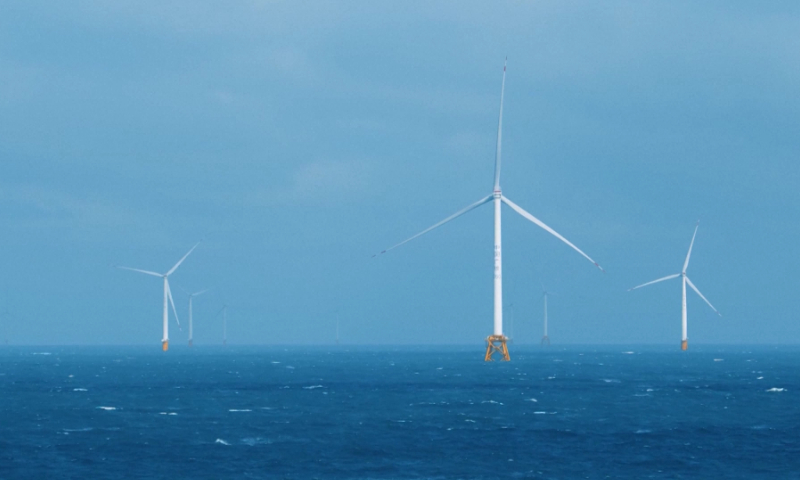
The first million-kilowatt-level offshore wind power project in the Guangdong-Hong Kong-Macao Greater Bay Area goes into operation in Huizhou, South China's Guangdong Province, on December 12, 2023. The project can reduce carbon dioxide emissions by about 2.35 million tons per year, equivalent to reforestation of 6,750 hectares. Photo: VCG
China's national carbon emissions trading market has become the largest of its kind worldwide for greenhouse gas emissions, with the annual market coverage of carbon dioxide emissions reaching about 5.1 billion tons and including 2,257 major units, a senior official from
the Ministry of Ecology and Environment said on Monday at a press briefing.
Observers noted that the national carbon market has been playing a vital role for realizing the country's carbon peaking and carbon neutrality goals, operating smoothly since it opened two-and-half years ago.
The national carbon market chose the power sector as a breakthrough to start with in July 2021, and it completed two compliance cycles from 2019 to 2020 and from 2021 to 2022, with both cycles achieving the goals, Vice Minister of Ecology and Environment Zhao Yingmin told the press briefing.
Zhao highlighted the market's stable operation as a major achievement, along with higher activity and steadily growing carbon prices.
The trading volume of the second compliance cycle increased by 19 percent over the first one, and turnover grew by 89 percent.
Carbon prices increased from 48 yuan ($6.67) per ton at the beginning to 80 yuan per ton, up about 66 percent, Zhao noted.
The national carbon market has become an important market-based means for China to address climate change and achieve its "dual-carbon" goals, Ma Jun, director of the Beijing-based Institute of Public and Environmental Affairs, told the Global Times on Monday.
Ma said that the successful launch and stable operation of the carbon market in China means a lot, as the country is facing a relatively large quantity of emissions and difficulty in reducing them within a tight timeframe. He stressed the importance of utilizing market-oriented approaches like the national carbon market to make progress efficiently.
The stable operation of the carbon market significantly contributed to advancing the nation's "dual-carbon" goals and promoting green and low-carbon development, Zhao noted.
For example, the cost of carbon reductions has been reduced. The total cost of reductions in the power sector was cut by about 35 billion yuan during the two compliance cycles.
Speaking on the market's expansion, Zhao said that the ministry is actively promoting the initial expansion. Currently, only the power sector is included in the quota control for eight high-energy-consuming industries including power generation, iron and steel, construction materials, and other sectors, which account for about 75 percent of China's carbon dioxide emissions.
Ma said that the carbon market started off with the power sector as it has the largest amount of emissions with relatively mature methods of emissions calculation. Ma said expansion would be based on the remaining industries' emissions and the maturity level of their management.
New carbon emissions trading regulations were released earlier this month and will take effect on May 1, 2024, the Xinhua News Agency reported. The regulations aim to provide a legal framework for the operation of China's carbon emissions trading market and ensure the effectiveness of related policies.
Global Times




